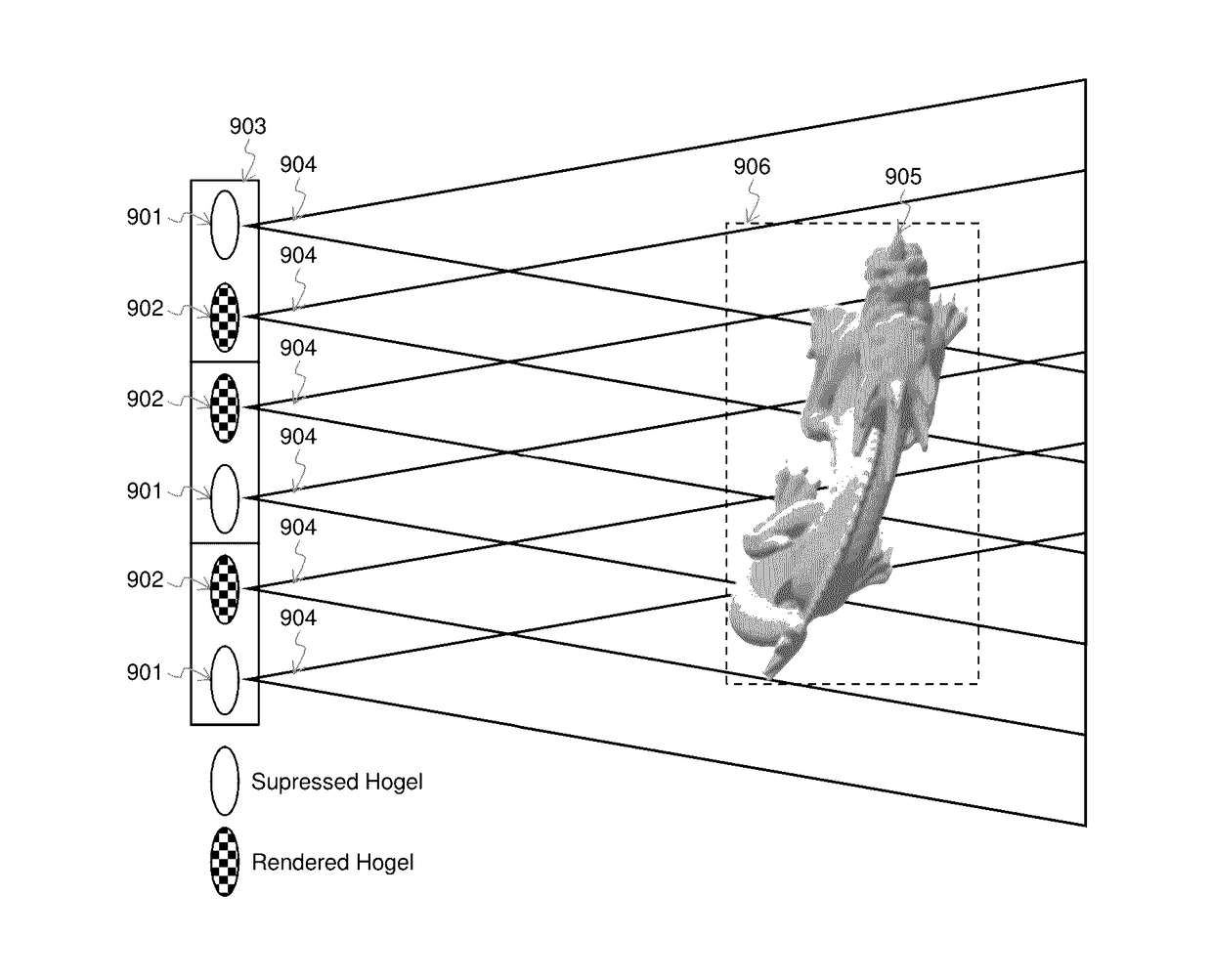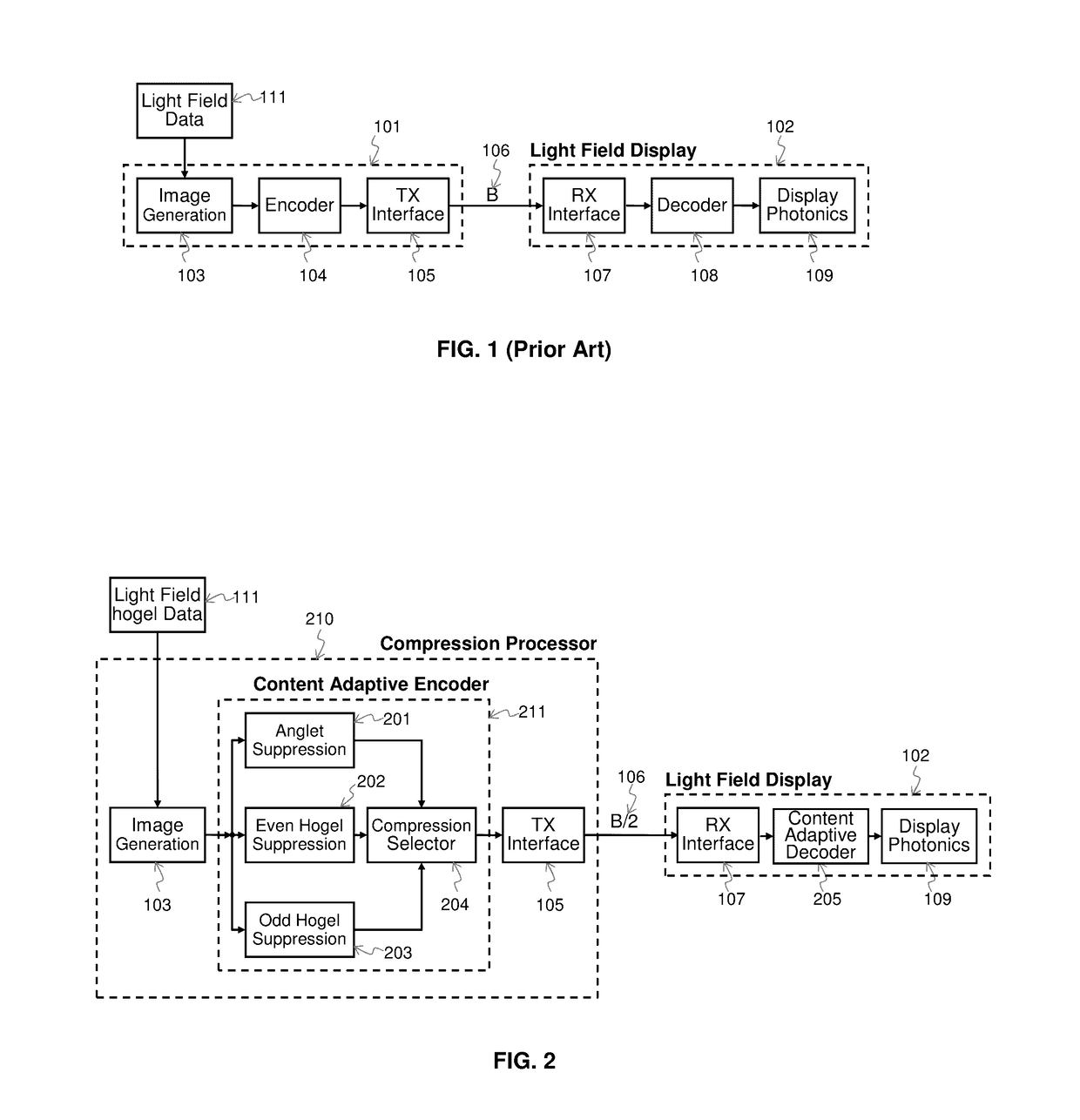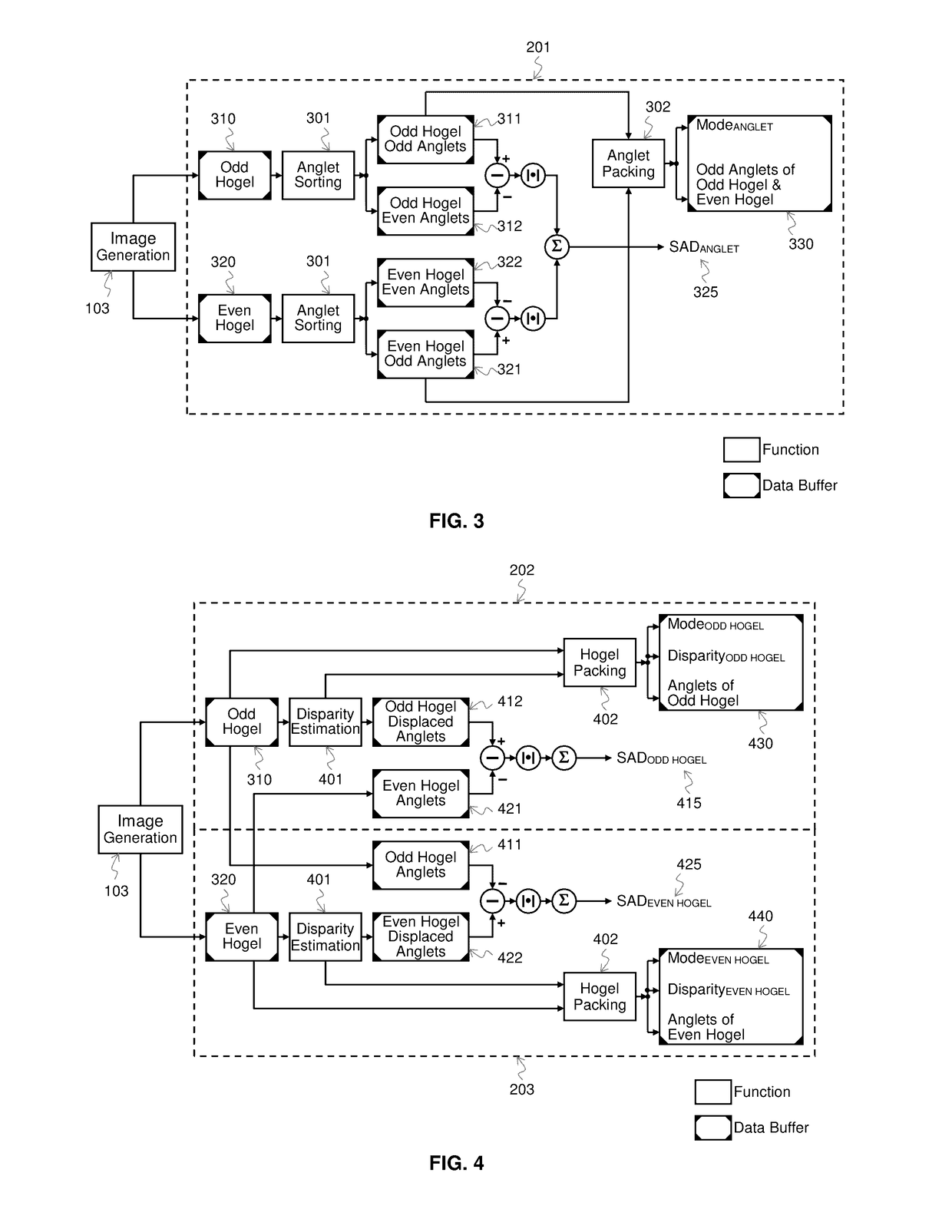Content Adaptive Light Field Compression
a technology of light field imaging and content, applied in image enhancement, image analysis, instruments, etc., can solve the problems of unsatisfactory video latency for real-time display applications, significant reduction in bit rate, and inability to adapt to content,
- Summary
- Abstract
- Description
- Claims
- Application Information
AI Technical Summary
Benefits of technology
Problems solved by technology
Method used
Image
Examples
Embodiment Construction
[0025]A “light field” is a vector function that completely describes the amount of light flowing in every direction through every point in space, including its direction, amplitude, frequency, and phase. In particular, the collection of light rays emitted from a scene composed of 3D objects is considered to be a light field. By emitting light with modulated color, intensity and direction, light field displays are able to reproduce a light field of scenes to display 3D objects without the need for glasses and with reduced vergence accommodation conflict (VAC).
[0026]To reproduce 3D images, light field displays incorporate a sufficient number of pixels, with each pixel generating a collimated light bundle modulating color and intensity of a view of the light field in a unique direction, designated and referred to as an “anglet”. A holographic element, or “hogel”, consists of the group of neighboring anglets pointing to all viewing directions reproducible by the display. In a hogel, ang...
PUM
 Login to View More
Login to View More Abstract
Description
Claims
Application Information
 Login to View More
Login to View More - R&D
- Intellectual Property
- Life Sciences
- Materials
- Tech Scout
- Unparalleled Data Quality
- Higher Quality Content
- 60% Fewer Hallucinations
Browse by: Latest US Patents, China's latest patents, Technical Efficacy Thesaurus, Application Domain, Technology Topic, Popular Technical Reports.
© 2025 PatSnap. All rights reserved.Legal|Privacy policy|Modern Slavery Act Transparency Statement|Sitemap|About US| Contact US: help@patsnap.com



